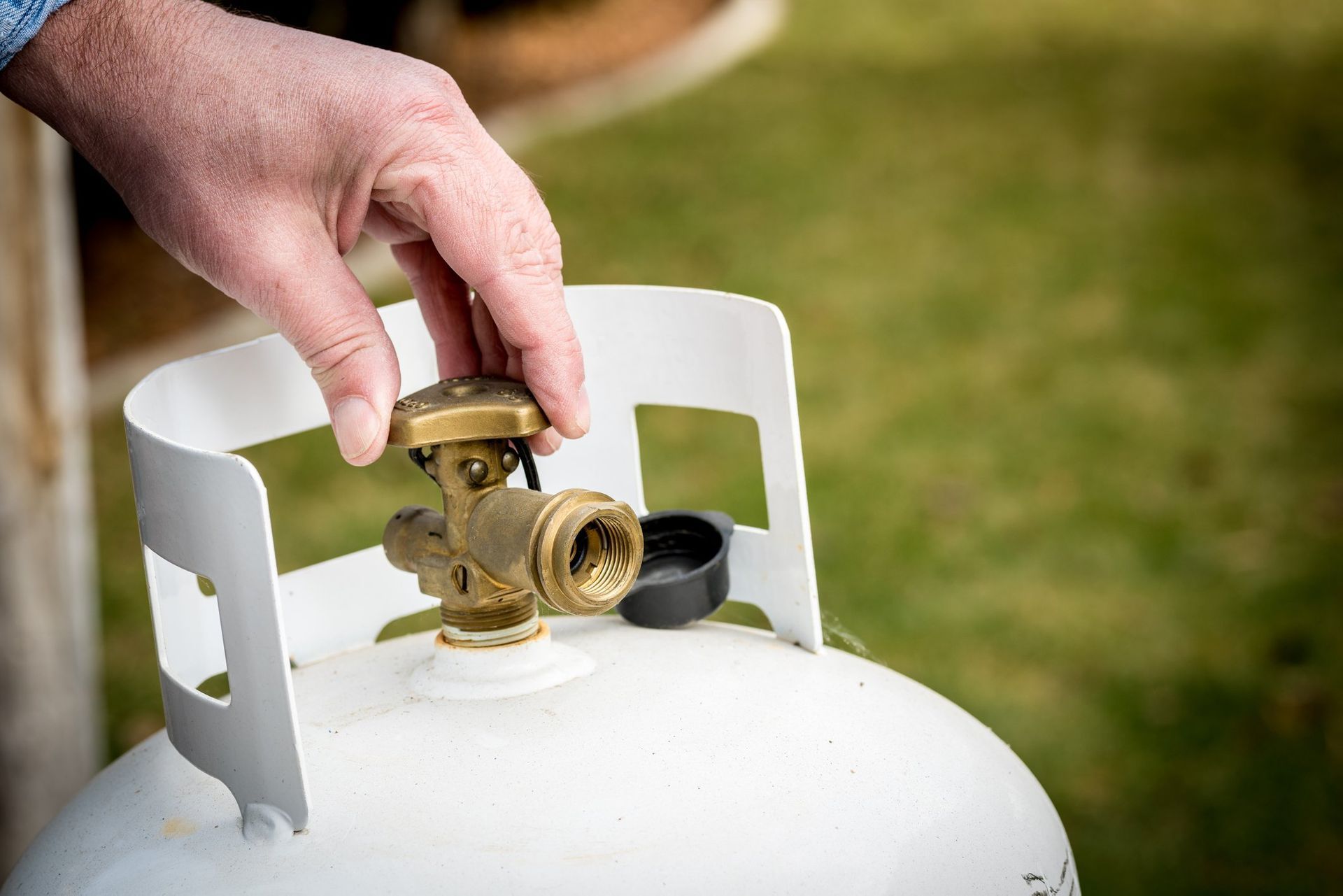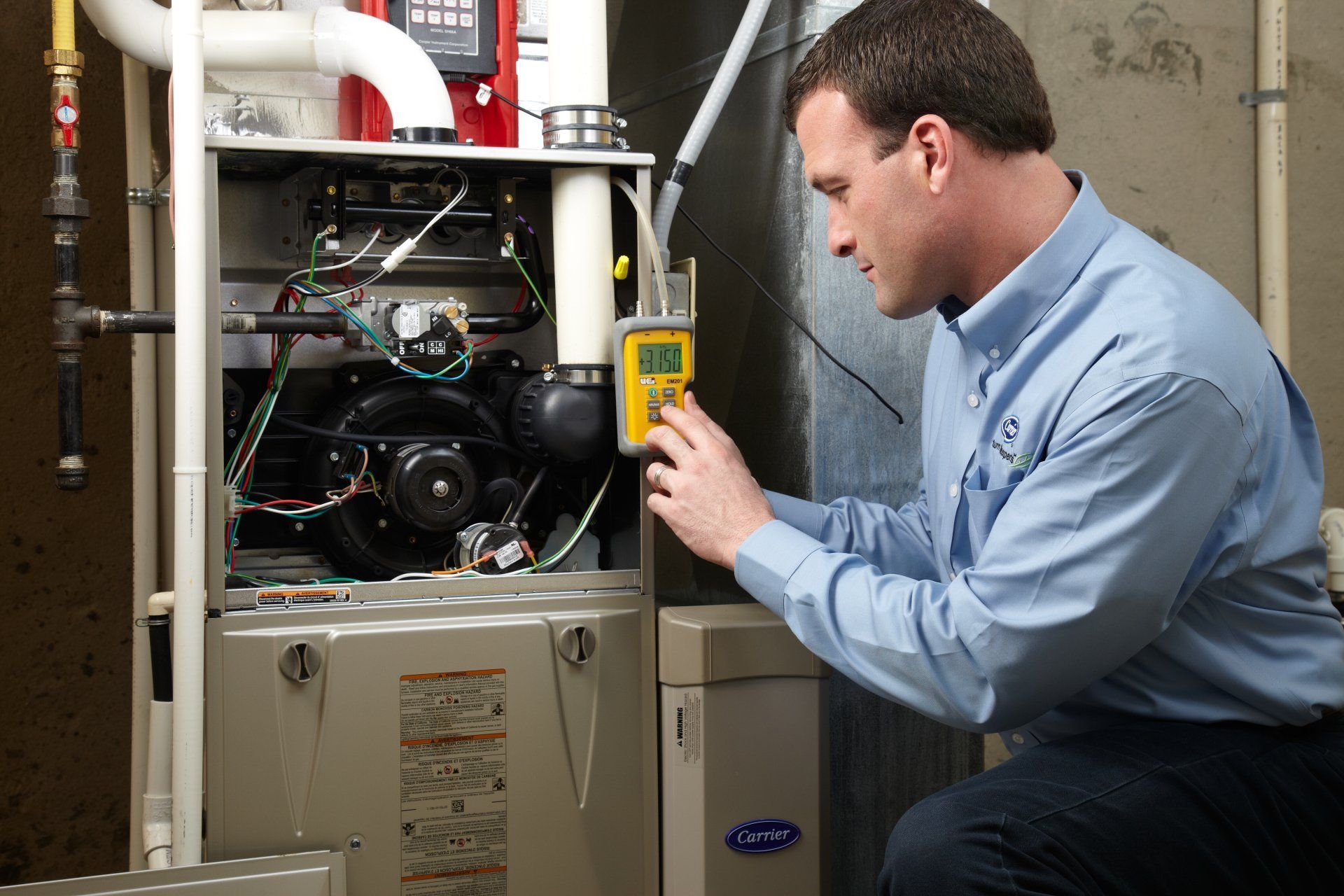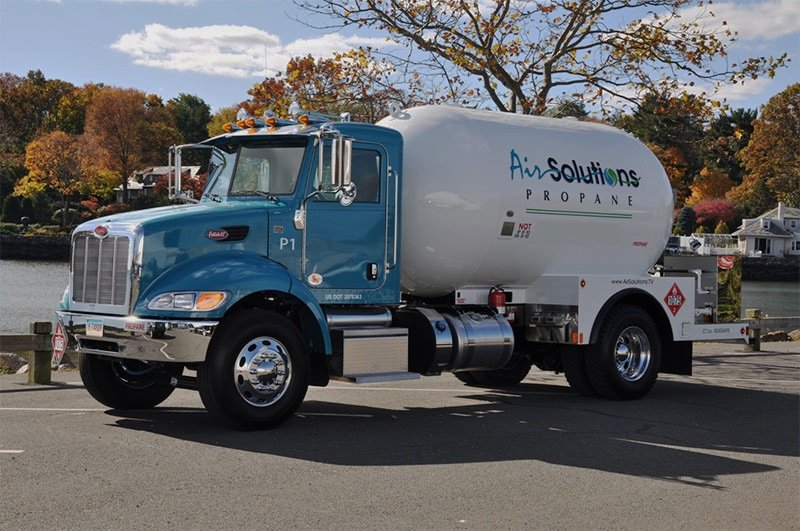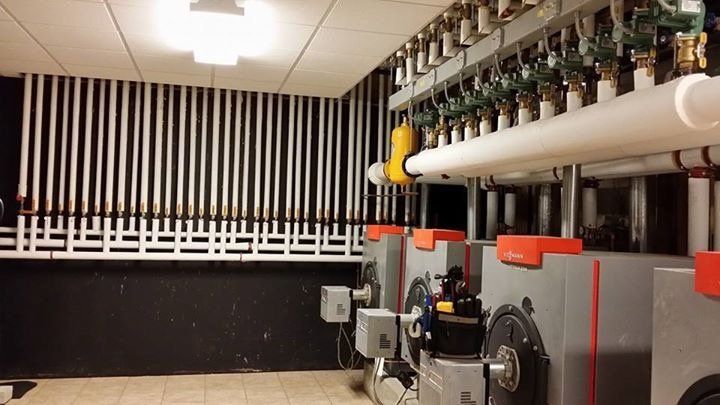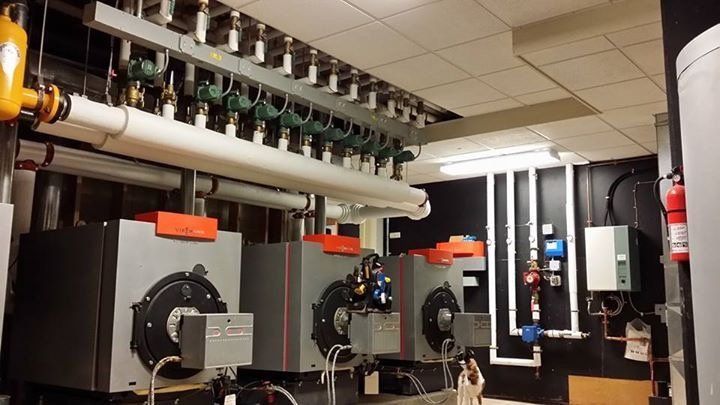Heating
Air Solutions Inc. specializes in high efficiency heating products and the latest technologies. Our services can help keep your home warm.
Air Solutions Inc. specializes in high efficiency heating products and the latest technologies. Our HVAC services can help keep your home, in Westchester County, NY, Fairfield, CT and the surrounding areas, comfortable by making it easy to control the temperature of your home, cleaning up dirty air, controlling humidity and installing system controls.
Our team will help you choose the system that’s right for you. Our options include a gas furnace and air conditioner duo, a heat pump, a small packaged system or a boiler. The most common choice found in homes in Greenwich, New Canaan and Darien today is the furnace and AC duo.
Cooling
Our team can inspect your current cooling system and offer advice as to what kinds of issues you’re having and what repairs you will need.
Our team can inspect your current cooling system and offer advice as to what kinds of issues you’re having and what repairs you will need. There are many factors that go into this, including location, age and layout of the home; energy sources available; and the condition of your current system.
Air Solution Inc.’s team can analyze your current system and provide the proper fix to any issue. We provide quality air conditioning services and used equipment from the finest brands in the industry, including a full line of Carrier products.
Our Solutions
The Best HVAC Team
An Authorized Carrier Dealer, Turn to the Experts...
The finest heating and cooling solutions are found at Air Solutions Inc. Manage the indoor climate of your home or business with help from the best team around for HVAC services. Everything about Air Solutions Inc. is top notch, from our team of expert technicians to our friendly and professional office staff. Call us today for heating and cooling solutions!
Why Choose Air Solutions?
We excel in all aspects of business, from sales to service.
Sales
- Authorized Carrier Dealer.
- We stand by ALL quotes.
- Company is privately owned.
- 25 years' experience.
- Our sales team will never sell you items you do not really need.
- All service technicians are NATE certified.
Design
- Designed for optimum efficiency to lower energy bills.
- Systems will produce even temperatures that meet your personal requests.
- Reduced noise through proper-sized ducts.
- Our Systems are designed to fit the structure of your home, so it does not invade your living space.
Install
- Only high-quality materials.
- Close attention to detail.
- Less invasive to existing homes.
- We require out technicians to put on disposable booties and rubber gloves before they enter your home, so we leave your floors and walls as clean as they were before we arrived.
Service
- Service manager with over 40 years' experience.
- Service Agreements and Mainainance Plans available.
- 40 vehicles in our fleet, all with GPS systems.
- Same-Day Service Guarantee.
- 24-Hour emergency service.
- Appointments Scheduled.
- Website for convenient service and Sales requests that fit your schedule.

25 Years of Experience
Write your caption hereButton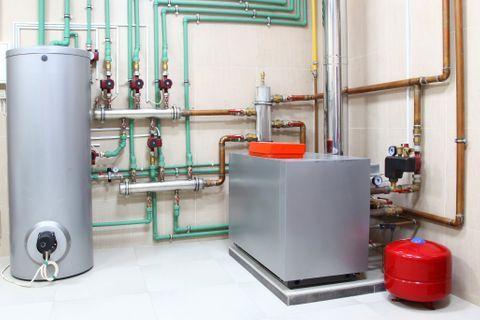
Produce Even Temperatures
Write your caption hereButton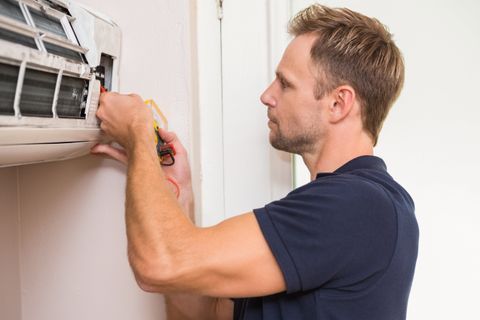
We Only Use High-Quality Materials
Write your caption hereButton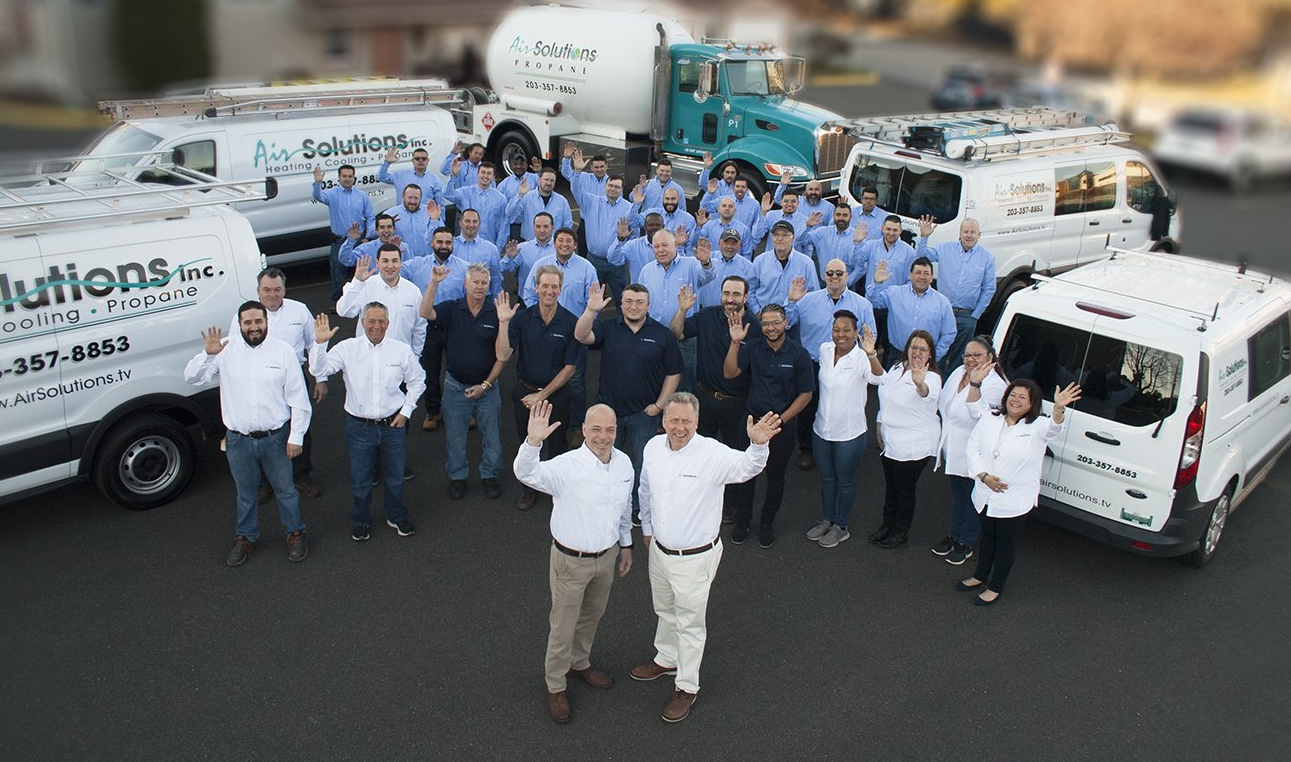
Same-Day Service Guarantee
Write your caption hereButton
-
Button
We design and install new tanks both above and below ground and provide complete maintenance.
-
Button
Call today for routine air conditioning & heating services or replacement.
-
Recent Projects
More ProjectsWe operate on one overriding
principle: we go the extra mile.
-
Button
Air Solution Inc.’s team can analyze your current system and provide the proper fix to any issue.
Request HVAC Services
If you need heating or cooling services, simply fill out our service request form:
We will get back to you as soon as possible
Please try again later
HVAC FAQs
Have a question? We've got answers. For more assistance call us at 203-357-8853.
- Can you tell me more about your company?
Air Solutions is a friendly, locally-owned HVAC company that has been serving the Greenwich, CT area since 1999. We offer you the most reliable and professional heating, cooling, and propane delivery services in the area! We have the experience needed to provide you with the absolute best HVAC solutions available. So, if you are experiencing HVAC problems or need a new system altogether, we are only a call away!
From helping you choose an HVAC system to installation to maintenance and repair, we have the experience and training to serve you every step of the way. We operate on one overriding principle: we go the extra mile. When you come to us for your HVAC needs, we make it our goal to give you the absolute best service and customer care you’ve ever had! And if you’re looking for propane delivery, you will love our ‘Never Run Out’ guarantee. When you call us, we will treat you like family and our customer service team will give immediate attention to your request. Call Air Solutions today, an authorized Carrier dealer. Turn to the Experts.
- What should I look for in a home comfort system?
The four biggest factors in your home's comfort are:
Temperature: To most people, temperature is both the beginning and the end of any discussion involving comfort. Simple temperature management is only the beginning. In fact, when the world's first modern air conditioner was being developed, one of the comfort dilemmas he was trying to solve was humidity control. But, to achieve superior indoor comfort, you've got to start with the basics -- heating or cooling -- as the foundation for your system.
Cleanliness/Freshness of Air: Dusty, dirty homes at any temperature can cause feelings of discomfort to many people, especially allergy sufferers. And, the air in today's tightly-sealed, well-insulated and energy-efficient homes can become stale as the same indoor air is circulated and re-circulated. The fact is, with dust, pollen, pet dander, mold, skin flakes, chemical fumes, cigarette smoke, Radon gas and more, the air inside your home can be even more polluted than the air outside. Air Solutions can alleviate these problems and therefore add another level of comfort.
Humidity: Humidity is a funny thing. In the winter, dry air can cause static electricity, itchy skin, damage to home furnishings and more. Adding humidity is a good thing because it makes the air feel warmer and more comfortable while minimizing damage to furnishings. In the summer, it is preferable to remove humidity so indoor air feels cooler and less sticky. Air Solutions' answer? Improved comfort through humidity control.
System Control: Some of the common comfort complaints from homeowners include: inconsistent temperatures from one room to the next, up and down temperature swings, constantly adjusting the thermostat, and more. System controls of varying degrees of sophistication can help with these issues, offering straight temperature control, programmability that allows setting a "comfort schedule," temperature and humidity control combined, and dividing the home into zones which can be controlled separately. Air Solutions provides this kind of control.
- What kind of system is right for me?
The system that is right for you will depend on a number of factors: your budget, your comfort expectations, physical factors such as what type of system currently exists in your home, the unique features of your home and more. Below, you can explore the available system options and some of the key factors that affect your choice.
Types of systems: For the basics of heating or cooling temperature control, you typically will have four system options. Below is a list of those options followed by the approximate percentage of U.S. homes using that particular system.
• Gas Furnace/Air Conditioner (60% of homes)
• Heat pump (25% of homes)
• Small Packaged System (5% of homes)
• Boiler
Key Accessories: Additional comfort comes from having clean, fresh air as well as proper humidity levels inside. These products will fine-tune your system to help improve your overall comfort and the efficiency of your indoor comfort system.
• Air Cleaners
• Ventilators
• Humidifier
System Control: Most people are familiar with the basic thermostat. But, system control is more than picking a temperature and walking away. It includes being able to program a comfort schedule for different times of day, setting humidity levels, and even setting different temperatures for different areas of the home. Here's how:
• Humidifiers
• Thermidistat™ Control
• Zoning System
- What factors should I consider before buying a new system?
Some of your home comfort decisions will be made for you based on some of the physical considerations involved, including:
Your home: Everybody's home is different. Some are big, some are small. Older homes are not as tightly sealed as new ones, which mean efficiency is reduced. The number and size of windows, what direction the home is facing, number of mature trees in the yard and many more factors can affect your comfort, and may play a part in deciding what type of system is best for you. Your local heating and cooling contractor should have the expertise to assess any unusual circumstances surrounding the specific needs of your home.
Your existing system: If you are replacing an existing system, there are physical and financial reasons to stay with the same type of system. For example, if you currently have a boiler, it will be very expensive and physically challenging to install the ductwork you need for a forced-air furnace or heat pump.
If you want a new type of system because you were dissatisfied with your comfort, remember that a new system will bring newer comfort technology and energy efficiency. Also, your comfort problem could be related to other issues, such as improper ductwork, system balance, cleanliness or freshness of air, humidity control and system control.
Your geographical region: Although there are exceptions to every rule, geography can play a role in what type of system will work best in your home. Here's the general idea:
Colder regions - Furnace or boiler/air conditioner combo
Warmer regions - Heat pump or air conditioner w/ supplemental heat
Regions with land or space issues - Small packaged rooftop systems
- What energy sources are available?
Some systems simply won't work if the proper energy source isn't available or too expensive to consider. The three most likely energy sources for your comfort system are electricity, gas or oil.
- Electricity: If you have no gas or oil service, you will need to go with an all-electric system, which means a heat pump or air conditioner. You may be able to have a gas line installed at your home, but that could be an additional cost. In some areas, electrical rates are so low that an all-electric system can still be the best option even if gas or oil are available.
- Gas: If natural gas is available, furnaces and boilers become options for you. You may still opt to have an all-electric system if that suits your home or your personal preference.
- Oil: If natural gas is available, furnaces and boilers become options for you. You may still opt to have an all-electric system if that suits your home or your personal preference.
- How can I compare brands?
Most people understand the idea of comparing gas mileage or engine sizes when shopping for cars of different brands. But, how can you compare quality between different brands of heating and cooling equipment? And, what are the industry-standard measures that can help you make objective comparisons?
Here is some guidance in these areas:
• Quality
• Comfort
• Efficiency
• Sound Levels
Comparing Quality:
Ever heard the term, "You get what you pay for?" Choosing products of higher quality can mean longer lasting performance and fewer headaches (and expenses) down the road. Unfortunately, comparing quality between heating and cooling systems is not always easy. Here are three guidelines we suggest:
- Select a brand name that you trust. As a general rule, the bigger, better known brands will have a better reputation for quality and reliability - that's how they got to be so well recognized. For example, Air Solutions products undergo a rigorous series of quality tests that begins during initial product development and continues with field-testing of hand-built prototypes. Many of Air Solutions' quality checks during production are performed on every product we make, not just random samples. And, final products are run-tested. Every product we make is then backed by warranty protection of key components as well as the entire product.
- Smaller companies and brand names you don't recognize may not perform these types of tests. It is in your best interest to do a little more homework about the company itself and its quality/reliability testing procedures as well as their warranty programs. All of these areas can give you clues about the quality of the products they manufacture.
- Solicit recommendations. Recommendations from friends, neighbors or trusted acquaintances can be helpful as well. Ask people you trust if they've had a new indoor comfort system installed. If they're happy with what they've purchased, it may be worth your time to take a look at the products yourself, check the quality of installation, and feel the comfort. When doing so, remember that every home is different, and what may work in your friend's home may not be the best solution for you.
Look for 3rd party endorsements. Product endorsements from independent ratings companies, government agencies, or consumer groups are generally good sources for reliable information. These entities have nothing to gain by praising a particular product, so you can typically trust the information and opinions they provide. Some third-party endorsements to look for may include:
• EPA's Energy Star
• EPA's Green Star
• Consumer Digest
- What kind of system is right for me?
The system that is right for you will depend on a number of factors: your budget, your comfort expectations, physical factors such as what type of system currently exists in your home, the unique features of your home and more. Below, you can explore the available system options and some of the key factors that affect your choice.
Types of systems: For the basics of heating or cooling temperature control, you typically will have four system options. Below is a list of those options followed by the approximate percentage of U.S. homes using that particular system.
• Gas Furnace/Air Conditioner (60% of homes)
• Heat pump (25% of homes)
• Small Packaged System (5% of homes)
• Boiler
Key Accessories: Additional comfort comes from having clean, fresh air as well as proper humidity levels inside. These products will fine-tune your system to help improve your overall comfort and the efficiency of your indoor comfort system.
• Air Cleaners
• Ventilators
• Humidifier
System Control: Most people are familiar with the basic thermostat. But, system control is more than picking a temperature and walking away. It includes being able to program a comfort schedule for different times of day, setting humidity levels, and even setting different temperatures for different areas of the home. Here's how:
• Humidifiers
• Thermidistat™ Control
• Zoning System
Comparing Comfort:
All systems are not alike. Newer technology has allowed manufacturers to offer high tech systems that do more than just blast hot or cold air through your ducts and out into your home. Many of today's systems offer the technology to reduce draftiness, eliminate the up and down temperatures you may have been experiencing and more. Here's how:
Two-speed Furnaces: By operating on low speed up to 90% of the time, two-speed furnaces run for longer periods of time than single-speed furnaces. That means fewer on/off cycles, fewer drafts (from the blower kicking on) and much smaller temperature swings -- only one or two degrees instead of the four-degree swings common with single-speed furnaces. Plus, better air circulation helps prevent air "stratification" warm air rising to the ceiling and cold air settling on the floor. In short, you get consistent, even heat throughout your home.
Variable-capacity Furnaces: Variable-capacity furnaces also offer "smart" motors than can monitor your home's comfort needs and automatically adjust the volume and speed of air to provide the greatest comfort and the most efficient heating or cooling. They provide the ultimate combination of comfort, efficiency and quiet performance.
Two-speed Air Conditioners and heat pumps: Two-speed units can run on low speed (using 50% of the energy) up to 80% of the time, so they offer the same benefits as multi-capacity furnaces fewer on/off cycles, fewer drafts and much smaller temperature swings. You also get better air circulation, for even, consistent cooling and/or heating throughout your home. Plus, if you purchase a multi-speed or variable-capacity furnace or fan coil with your unit, you will enhance both the comfort and the efficiency of your air conditioning or heat pump system even further.
- How can I make my system more environmentally sound?
There's a hole in the ozone. Global warming is here. Most of us are aware of how our lifestyles can affect the environment. Air Solutions is aware of this also, and offers options for making your HVAC system more environmentally sound.
- Can I troubleshoot before calling Air Solutions?
The answer is, "Yes." Here are some simple procedures you can perform before going to the expense of a service call:
• Check disconnected switches (indoor and outdoor if you have a split system). Make sure that circuit breakers are on or that fuses have not blown.
• Check for sufficient airflow. Make sure air filters are clean and that supply-air and return-air grilles are open and unobstructed.
• Check the settings on your thermostat. If you want cooling, make sure the temperature control selector is set below room temperature and the SYSTEM switch is on the COOL or AUTO position. If you want heat, make sure the temperature control selector is set above room temperature and the SYSTEM switch is at HEAT or AUTO. The FAN switch should be set at ON for continuous blower operation or AUTO if you want the blower to function only while the unit is operating. In addition to the routine maintenance you perform, your home comfort system should be inspected at least once a year by a properly trained service technician. Air Solutions will make sure your system operates safely and gives you the best performance at the lowest cost. You may also want to ask us about an economical service contract that covers seasonal inspections for a flat fee.
- Electricity: If you have no gas or oil service, you will need to go with an all-electric system, which means a heat pump or air conditioner. You may be able to have a gas line installed at your home, but that could be an additional cost. In some areas, electrical rates are so low that an all-electric system can still be the best option even if gas or oil are available.
- Gas: If natural gas is available, furnaces and boilers become options for you. You may still opt to have an all-electric system if that suits your home or your personal preference.
- Oil: If natural gas is available, furnaces and boilers become options for you. You may still opt to have an all-electric system if that suits your home or your personal preference.
- What routine maintenance do I need help with?
Think about how you take care of your car. Sure, most people can handle the little stuff - checking and topping off fluids, keeping tires inflated to the correct pressure, changing the wiper blades. But, to keep your car operating at its best, you need an occasional tune-up from a trained professional.
Your HVAC system is no different. To get the most performance and longest life from your system, it's a good idea to have a professional perform routine checks in the spring and in the fall.
Spring maintenance
In the spring, Air Solutions will typically check a heat pump or air conditioner for all or some of the following:
• Operating pressures • Refrigerant charge • Filter condition • Compressor
• Fan motor • Capacitors • Belts
• Crankcase heaters • Coils cleaning
• Lubrication of moving parts
Fall maintenance
In the fall, you can expect Air Solutions to check your furnace in the following areas:
• Burner and pilot assemblies • Cracks in the heat exchanger • Check the pilot thermocouple
• Examine the filter and check vent piping • Test the electronic ignition
• Test the fan • Test the limit switch • Burner adjustments
• Measure manifold gas pressure • Measure temperature rise
• Carbon monoxide test • Set the heat anticipator
• Check and adjust belt tension
• Examine the draft diverter
• Lubricate the fan motor
- What maintenance can I do myself?
With the proper maintenance and care, your equipment will operate economically and dependably. There are a few simple, routine maintenance operations you can do to help ensure the best performance and comfort from your system.
Safety First
Before you perform any kind of maintenance, consider these important safety precautions.
• Disconnect all electrical power to the unit before removing access panels to perform maintenance. Please note that there may be more than one power connection switch.
• Take special care to prevent cuts from sharp edges in the construction of your equipment, it’s best to be very careful when you handle parts or reach into units.
Check the air filter in your furnace or fan coil every 3 to 4 weeks. A dirty filter will cause excessive strain on your furnace, air conditioner or heat pump. Replace your filter when necessary, or clean it if you have the reusable type. If you have a reusable filter, make sure it’s completely dry before you re-install it. The prefilter and collection cells of an electronic air cleaner should be cleaned at least two or three times per year.
Clean dust off of your indoor coil. With a vacuum cleaner and soft-brush attachment, you can remove any dust from the top and underside of the coil. Make sure you only do this when the coil is dry. If you can’t get the coil clean this way, call Air Solutions for service.
Keep your outdoor condensing unit free of debris. If you keep grass clippings, leaves, shrubbery and debris away from your outdoor unit, it should only require minimal care to operate properly. Check the base pan, which is located under the unit, occasionally and remove debris, to help the unit drain correctly.
If the outdoor coil becomes dirty, use a brush or a vacuum cleaner with a soft brush attachment to clean the surface. To clean dirt that is deep in the coil, contact Air Solutions.
Take special care of outdoor condensing units in ocean environments. If your unit is located near a sea coast, you can help preserve its optimal condition with a little extra care. Ocean mist and sea breezes carry salt, which is corrosive to most metals. Although most new units are made out of galvanized metal and are protected by top-grade paint, you can add life to your unit by washing all exposed surfaces and the coil approximately every three months. Ask Air Solutions about the appropriate interval in your area.
Make sure your outdoor unit stays in a level position. If the support for your split-system outdoor unit shifts or settles and the unit is no longer level, re-level it promptly to make sure moisture drains properly out of the unit. If you notice that water or ice collects beneath the unit, arrange for it to be drained away from the equipment.
Inspect your furnace’s combustion area and vent system before each heating season. If you find dirt, soot or rust, your system may not operate properly or at its peak efficiency. Call Air Solutions and do not operate your furnace until it is professionally inspected and/or repaired.
Have oil-fired boilers inspected annually. Call Air Solutions before each heating season to replace your oil filter cartridge and conduct a thorough inspection of the unit’s operation.
Clean your humidifier at the beginning of every heating season. Review your owner’s manual for the proper procedure to clean the external and internal components of your unit. The evaporator pad should also be replaced before each heating season. If the water in your area is hard or has high mineral content, you may need to clean or service your humidifier more frequently.
Clean the core and air filters on a ventilator at least every three months. You can vacuum the core of an energy recovery ventilator as long as it is dry and the outdoor temperature is between 60 F (16 C) and 75 F (24 C). Heat recovery ventilator cores can be soaked for three hours in a solution of warm water and mild soap and then rinsed. Ventilator air filters are washable: just use a vacuum to remove the heaviest accumulation of dust and then wash them in lukewarm water. Replace them after they are completely dry.







